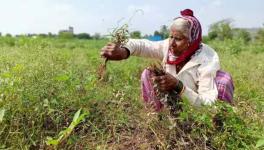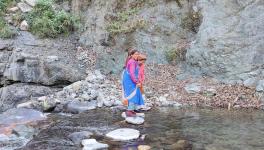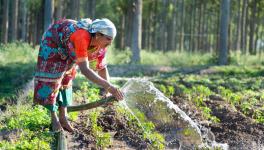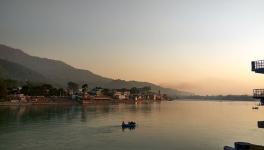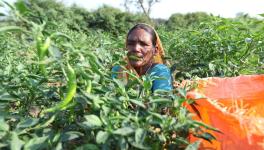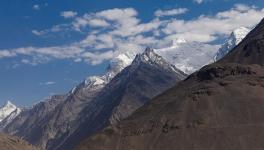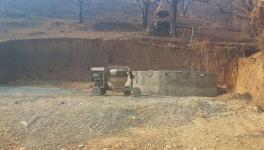Stop Building Divisive Agenda on Climate Migration, Says CSE Report
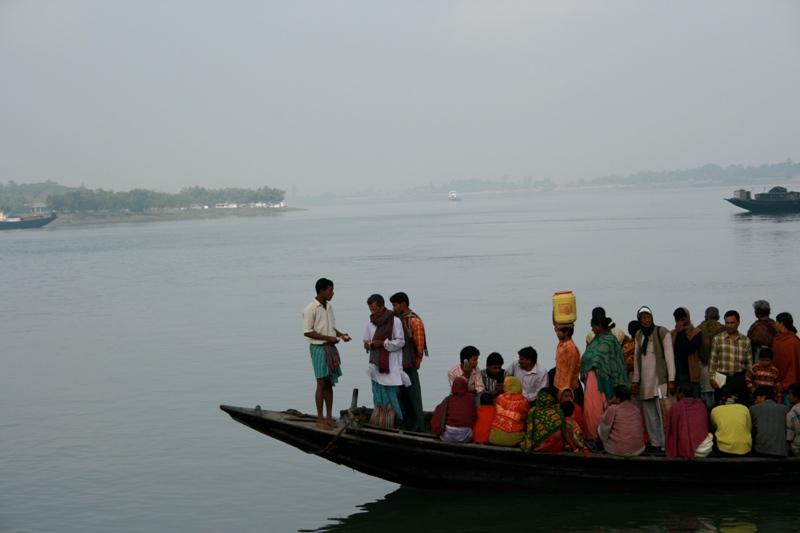
Patna: It’s the poor who are forced to move due to natural disasters and climate change inside the country, and outside, confirms the latest State of India’s Environment Annual report by the Centre of Science and Environment released on February 9 in Alwar, Rajasthan.
According to the CSE report, natural disasters now affect more than half of India’s population, with an increasing intensity and frequency, both in rural and urban areas.
As per the National Disaster Management Authority (NDMA), 27 out of 37 States and Union Territories are disaster-prone. About 68% of the cultivated land is vulnerable to drought, 58.6% of the entire landmass is prone to earthquakes and 12% to floods. About 5,700 kilometers of the coastline is prone to cyclones and 15% of the country’s area is susceptible to landslides.
The CSE report added that the continuity and intensity of extreme weather events in India during 2018-19 has taken even climate scientists and meteorologists by surprise. The world recorded 286 extreme weather events in 2018 and 228 in 2019, respectively. India witnessed 23 such events in 2018 and nine in 2019.
Extreme weather events, include conditions like drought, wildfire, flood, landslides, extreme temperatures, fog and storm.
On the subject of loss of lives, out of about 48% of deaths in Asia due to extreme weather events happened in India. In 2019, there were more deaths in India even though the number of such events were fewer – 2,038 people died in 2019 due to extreme weather events as compared to 1,396 in 2018.
“Remember, climate change impact is the tipping point as the poor are already living on the margins. Increased inequality is adding to stress; rural economies are dying,” said Sunita Narain, Director General of the Centre for Science and Environment. She was speaking at the 2020 Anil Agarwal Dialogue and Annual Media Conclave at Nilmi in Alwar.
“Weather-related events will drive people to the point of no return – they will join the hordes of migrants. We know this from the number of illegal settlements in our cities today,” she added.
The CSE press release quoted the 2011 Census which shows that 405 million (or 33%) of the country’s population are on the move, with some 9.9 million people migrating from one state to another every year. Displacement or rise in migration due to disasters has raised concerns on increasing human trafficking. It is a known fact that in countries like India, there has been clear evidence of links between disaster, migration and vulnerability to human trafficking. The UN Environment Programme estimates that trafficking goes up by 20-30% during disasters. Large-scale migration is also increasing xenophobia and intolerance across the world.
Narain suggested a two-pronged solution that nations should start thinking about immediately: “One, institute strategies to build local economies so that people do not have to leave. Secondly, stop building a divisive agenda on migration – there will be no end once we start counting outsiders.”
Back in 1990, the Inter-governmental Panel on Climate Change had noted that the single greatest impact of climate change will be on human migration. In 2018, of the new 28 million internally displaced people in 148 countries, 61% were due to disasters. In comparison, 39% were displaced due to conflict and violence. Experts believe that by 2050, more than 200 million people will be forced to flee their homes, the release said.
The report said that last January saw the end of the north-east monsoon season with a 44% deficit in rain – the third highest deficit over the past decade. North India was witness to one of the coldest and driest winters ever, and the extreme conditions spilled into February. In March, an un-seasonal heat wave roasted Tamil Nadu, Andhra Pradesh and Kerala. In April, thunderstorms with cloud-to-ground lightning strikes began affecting states in east, central and north-east India. The month ended with the formation of a rare pre-monsoon cyclone (Fani).
May and June were marked by a spate of heatwaves. By the first week of June, the country had undergone 73 spells of heatwave conditions, 11 of them extreme; with maximum deaths in Bihar (over 200). Conditions were so harsh that District Magistrates in five districts invoked Section 144 of the Criminal Procedure Code to restrict public activity during the day.
There was a delay in the onset of south-west monsoon, and July started with weak rainfall. However, once it started raining, it poured. Twelve states received over 60% surplus rains in the second week of July. Resultant floods in Bihar and Assam affected over 10 million people and claimed 168 lives. The rains came in short bursts of heavy downpours followed by drier periods, a pattern that continued till September. In all, there were 1,250 events of extreme rainfall during the year, or more than three per day.
Get the latest reports & analysis with people's perspective on Protests, movements & deep analytical videos, discussions of the current affairs in your Telegram app. Subscribe to NewsClick's Telegram channel & get Real-Time updates on stories, as they get published on our website.









